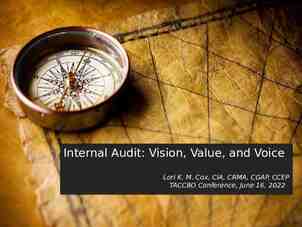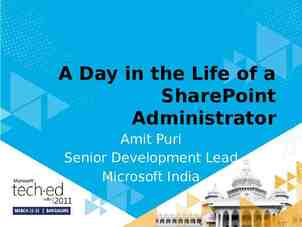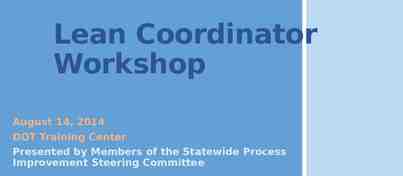November 2019 WSU Staff Recruitment Basics Overview of the
56 Slides2.14 MB

November 2019 WSU Staff Recruitment Basics Overview of the Staff Recruitment Process Developed by: Human Resource Services

Key Objectives 1) Recruitment Laws & Policies 2) Individual Recruitment Phases 3) Recommended Best Practices

Search Phases Screen & & Screen Interview Interview Advertise Advertise & & Outreach Outreach Prepare for the Search Perform Perform Reference Reference & & Background Background Checks Checks Hire Hire & & Onboard Onboard

Recruitment Laws & Policies Equal Opportunity in Employment FEDERAL LAWS Title VII of the Civil Rights Act Race Color Religion Sex National Origin Age Rehabilitation Act Disability Genetic Information NonDiscrimination Act Genetic Information Age Discrimination in Employment Act American with Disabilities Act

Recruitment Laws & Policies Equal Opportunity in Employment STATE LAWS WA State Law Against Discrimination Age Sex Marital Status Sexual Orientation Race Creed Color National Origin Veteran Status Military Status Disability Status WSU POLICIES Policy Prohibiting Discrimination & Sexual Harassment, EP #15 Gender Gender Identity/Expression Genetic Information

Recruitment Laws & Policies Equal Opportunity in Employment STATE LAWS WA State House Bill 1696 1. Employers may not seek the wage/salary history of an applicant, either from the applicant or their current or former employer, except as allowed in #3 below 2. Employers may not require applicants’ prior wage/salary to meet certain criteria, e/g/ meet a certain level or threshold 3. To facilitate the employment process, employers may confirm an applicant’s wage or salary history only 1. If the applicant has voluntarily disclosed their wage or salary history, or 2. After the employer has negotiated and made a job offer, including the amount of compensation, to the applicant 4. Post offer, employers must provide the minimum wage or salary for the position for which the applicant is apply (upon applicants request)

Pitfalls to Avoid

Disparate Treatment Discrimination Disparate Treatment - is direct intentional discrimination. It can take the form of treating an individual or several individuals differently from others based upon their membership in a protected class, such as race, gender, age, religion, color, national origin, or disability. Generally, this type of discrimination is easy to spot. Example: A job ad for an office assistant seeking “males” or “recent college graduates.” Such an ad discourages females or person’s over 40 from applying to the job. 8

Disparate Impact Discrimination Disparate Impact - Disparate impact refers to the policies, practices, rules or other systems that appear to be neutral, but result in a disproportionate impact on protected groups. Example: A fire department requiring applicants to carry a 100 lb pack up three flights of stairs. The upper-body strength required typically has an adverse impact on women. The fire department would have to show that this requirement is job-related for the position. This typically requires employers to conduct validation studies that address both the uniform guidelines and professional standards. 9

Griggs v. Duke Power Co. 401 U.S. 424 (1971) Griggs was an African American male; He was denied a ditch digger job because he failed to meet selection criteria (possession of high school diploma or passing grade on a written test); Supreme Court found that the facially neutral employment criteria violated Title VII because: o It had a disproportionate impact on Griggs’ protected group and o It was not job-related or consistent with business necessity. 10

Reasonable Accommodation Reasonable accommodations are effective adjustments made to a job, work environment or application process that enable qualified employees with disabilities to perform the essential functions of the job, and applicants to participate in the application process. 11

Reasonable Accommodation 12

Reasonable Accommodation in the Selection Process Tell ALL applicants what the selection process involves Ask ALL applicants whether or not they will need a reasonable accommodation for this process Ask ALL applicants whether or not they are able to perform the essential functions of the job either with or without reasonable accommodation *Contact your area’s/college’s HR Consultant if you have questions or concerns regarding the legal framework of recruitment and how it pertains to your particular search.

Search Phases Screen & & Screen Interview Interview Advertise Advertise & & Outreach Outreach Prepare for the Search Perform Perform Reference Reference & & Background Background Checks Checks Hire Hire & & Onboard Onboard

Prepare for the Search Benefits of hiring the best candidate for the position include: Decrease Costs Less Performance Issues Lower chance of Lawsuits and Litigation Overall increase in Morale

Prepare Position Details and Duties o Official Title/University Title o Working Title (if applicable) How will this be advertised? o Primary responsibilities and duties o Why does this position exist? Primary Functions? o Position configuration o Full Time/Part Time o 12 month appointment/9 month appointment

Prepare

Roles & Responsibilities Diverse Group of Individuals Neutral Evaluators Cross section of areas Committee Composition

Roles & Responsibilities

Confidentiality

o Designed to “sell” the position o Posted via OPDRS on WSUjobs.com o Describe duties o Describe department, college, University o Diversity commitment/needs

Prepare o Objective and measurable o Consistent with position details o Interpretation consensus o Specific qualifications o Qualification weight o Screening matrix

Search Phases Screen & & Screen Interview Interview Advertise Advertise & & Outreach Outreach Prepare for the Search Perform Perform Reference Reference & & Background Background Checks Checks Hire Hire & & Onboard Onboard

Advertise & Outreach o Good faith efforts o Review underutilized data o Cast wide recruitment net o Underutilized data is for outreach efforts only o Reach passive candidates Outreach Strategy

WSU’s Equal Employment Opportunity and Affirmative Action Policy Evaluation and hiring decisions are to be made without regard to race, sex, sexual orientation, gender identity/expression, religion, age, color, creed, national or ethnic origin, physical, mental or sensory disability, marital status, genetic information and/or status as a veteran. Search Committee may NOT give a candidate an advantage over other candidates simply because he/she may be in an underutilized group. Use this link to access WSU’s Equal Employment Opportunity and Affirmative Action Policy.

Advertise & Outreach Proactive Outreach Ideas Department/College Suggestions Nominations Alumni Directories/Databases Professional Contacts Student Groups

Advertise & Outreach Advertising Ideas National Publications or Websites (Chronicle of Higher Education, Seattle Times, NY Times) Professional Associations Mailings/Listservs Orgs or Websites for underrepresented groups (i.e. HERC Diversity Resources) Department Website See Staff Recruitment

Outreach Tools

Advertise & Outreach Length of Recruitment Period Recruitment Periods AP -National 30 calendar days AP-NW Regional/Statewide 21 calendar days AP - Local 14 calendar days CS Minimum of 5 business days

Advertise & Outreach OPDRS (Online Position Description and Recruitment System) o Hiring Manager submits the job posting in OPDRS o Recruitment documents o Direct link created o Guest user accounts

Advertise & Outreach o Utilize the tools within OPDRS including identifying search committee members and where advertisements are being placed. o OPDRS System Tips & Tricks o My Links o Announcements and Reminders http://hrs.wsu.edu/opdrs/

Search Phases Screen & & Screen Interview Interview Advertise Advertise & & Outreach Outreach Prepare for the Search Perform Perform Reference Reference & & Background Background Checks Checks Hire Hire & & Onboard Onboard

Screen & Interview Candidate Evaluation o Search Committee reviews candidate materials on an individual basis o Large pools; apportion the applications for initial evaluation o Minimize risk of potential bias

Screen & Interview Implicit Association Test IATs (Implicit Association Tests) are tools to demonstrate and examine conscious and unconscious divergences related to attitudes and beliefs about race, gender, religion, sexual orientation, disability, and other social categories. (Linked on the Staff Recruitment Toolkit)

Screen & Interview When screening candidates, Search Committee Members must: Candidate Evaluation o Review all application materials o Consider entire career history provided o Use pre-established evaluation tools o Ensure qualifications clearly demonstrated o Refrain from assumptions o Do not consider or score answers regarding work eligibility or visa sponsorship status o OPDRS Updates

Interview Question Activity

In your group, develop an interview question to determine the applicant’s skill/experience related to the following competency: 1) Conflict Resolution 2) Communication 3) Critical Thinking 4) Customer Service 5) Problem Solving

Screen & Interview Developing Interview Questions Developing Interview Questions o Standard set of questions o Focus on job duties o You can eliminate areas you already have adequate information on from the application and focus on those you need to learn the most about. o Behavioral vs. open ended questions o Application questions Refer to Sample Interview Questions

Screen & Interview Prohibited Pre-employment questions Interview Questions o Be vigilant in all interactions with candidates o Focus on job-related questions o Refrain from questions related to: Race, Religion, Gender, Age, Citizenship, National Origin, Sexual Orientation, Martial Status, Disability Status, Veteran Status Refer to the Pre-employment Inquiry Guidelines BPPM 60.08

Screen & Interview Screening Interviews o Short telephone call or videoconference o Clarify application materials o Job-related questions re: experience/qualifications o Gauge level of interest o Same opportunities provided to all o Take notes; narrow down the pool o Provide updates to Hiring Manager

Screen & Interview On-Campus Interview o Short-list of top candidates o Candidate also evaluating WSU o Various components included o Similar structure and opportunities for all o All interactions are potentially considered an “interview”

Screen & Interview During the entire interview process remember to think about the “candidate experience” Prior to the candidate coming on-campus: Candidate Experience o Will someone meet the candidate at the airport? Are they driving? o Does the candidate know where your office is located? o Did you provide a campus map? o Did you provide a parking permit for the candidate? o Have you prepared an Interview/Welcome Packet? Candidate Experience Sample Interview Packets

Screen & Interview Before the interview: o Provide names and titles of interviewers Candidate Experience o Provide an agenda o Copy of the Position Description

Screen & Interview During the interview: Candidate Experience o Does the candidate have everything they need? o Did you ask if they’d like something to drink? o Have they been to WSU before? o Did you offer a campus tour? After the Interview: o Thank the candidate for their time o Make sure to inform them when they will hear back

Search Phases Screen & & Screen Interview Interview Advertise Advertise & & Outreach Outreach Prepare for the Search Perform Perform Reference Reference & & Background Background Checks Checks Hire Hire & & Onboard Onboard

Perform Reference & Background Checks o Purpose – deeper dive; clarify questions or areas of concern which arose during the screen & interview phase o Notify candidate references will be contacted Reference Checks o Three contacts by two people o Same method for all candidates Sample Reference Check Documents: Staff Recruitment Webpage

Perform Reference & Background Checks Internet searches should be done appropriately and for professional purposes and not to obtain personal information about the candidate. o Internet Searches o Google o Social Media Internet Searches “Reference” and/or “background checks” should not be replaced with internet searches. If departments find something of concern during an internet search they should notify HRS.

Perform Reference & Background Checks Background Checks Designated at the beginning of search Offer may be contingent upon a successful completion Background check components Conducted on top 1-2 finalist(s) Background Checks, BPPM 60.16

Perform Reference & Background Checks Personnel File Top Finalists Current or former employees Search Chair or Supervisor may review Visit HRS to review file

Perform Reference & Background Checks o Hire recommendation to Appointing Authority o Summary of strengths/weaknesses o Hiring recommendation to HRS via OPDRS Hire Recommendation o Verbal offer made by Department Head o Negotiations of additional salary/terms may require approval o Offer Letter drafted, approved and sent o Official signature acceptance distributed to CC’s

Search Phases Screen & & Screen Interview Interview Advertise Advertise & & Outreach Outreach Prepare for the Search Perform Perform Reference Reference & & Background Background Checks Checks Hire Hire & & Onboard Onboard

Hire & Onboard Notify Candidates o Courtesy notification to on-campus interviewees o Email/letter to other candidates Notify Candidates o Closeout OPDRS; update all candidates’ status with individual “not hired” reasons and complete the hiring proposal HRS Templates: Staff Recruitment Webpage

Hire & Onboard Ensure recruitment records are kept in accordance with WSU’s Records Retention Policy Records Retention OPDRS o Application materials o Not hired reasons o Search Committee Members Search Committee o Copies of all advertising o Candidate evaluation tools o Screening and interview notes o Hiring Recommendation o Copy of final offer letter University Records – Retention & Disposition, BPPM 90.01

Hire & Onboard Onboarding plan suggestions Onboarding Process o Orientation Checklist o Welcome communication o Review duties/responsibilities, goals & plans o Department & Area/College orientation New Employee Orientation (HRS)

Resources Human Resource Services (509) 335-4521 hrs.wsu.edu [email protected] International Programs – Global Services (509) 335-4508 ip.wsu.edu/global-services [email protected] Office for Equal Opportunity (509) 335-8288 oeo.wsu.edu [email protected]







